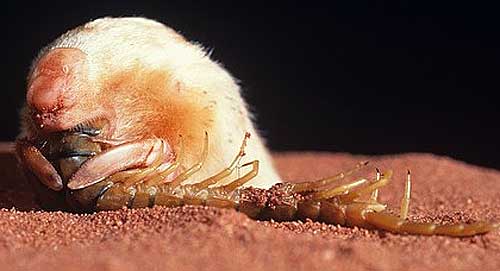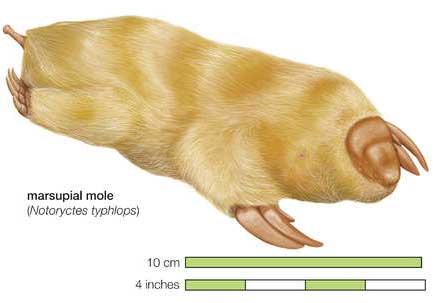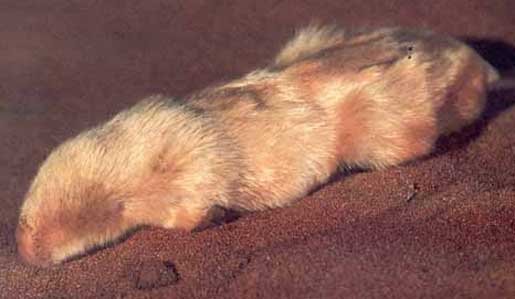Marsupial Mole – Creamy, Underground Fur Pellet with Claws

The marsupial mole is a family of marsupials which actually has only two species. These two species are the Southern Marsupial Mole and the Northern Marsupial Mole. They’re very rare species and due to this we know very little about them.
Marsupial moles spend the majority of their time underground and very rarely come to the surface. In fact, you’ll only find them at the surface if it has been raining. They are completely blind and have the appearance of having no eyes, in fact they do have eyes but they’re just very tiny and actually under their skin. They also have no external visible ears, just small holes under their thick coat. These two facts make their appearance very strange.

The marsupial mole has a cone shaped head, a short body and an even shorter stubby tail. They grow up to 6 inches (16 cm) and can weigh up around just 2 oz maximum. They have short cream-colored fur and interestingly, their characteristic marsupial pouch is inverted so it doesn’t fill with sand. They also only have two teats so they can never bear more than two offspring at a time. They have very short limbs and few digits, their front feet have large flat claws designed to excavate soil as they burrow.

The marsupial mole doesn’t have a permanent nest so to speak, in fact it sleeps and lives in the tunnel it creates, filling it in behind themselves to make a singular burrow. They are insectivorous and survive mainly on the cossid caterpillar and beetle larvae. They have an extremely interesting temperature management system which seems to be unique to their species. Basically, this creature can cope with extreme temperatures without any effect to its metabolism and similarly, it has a very low metabolic rate when at rest. However, it can increase up to sixty times when they’re burrowing as they suddenly require a high burst of energy.

This strange and mysterious creature looks pretty frightening with its lack of eyes and ears. However, its appearance and its behavior mean it is perfectly suited for its particular habitat and it’s actually a fantastic example of evolution.

